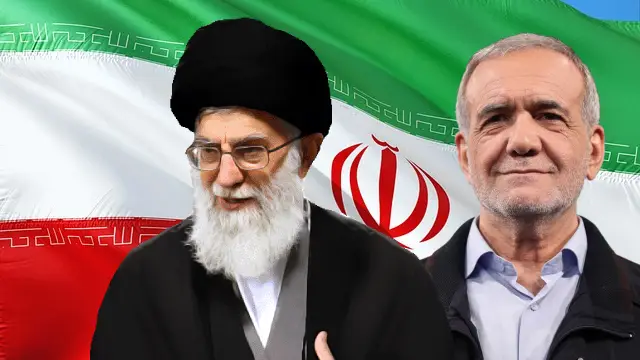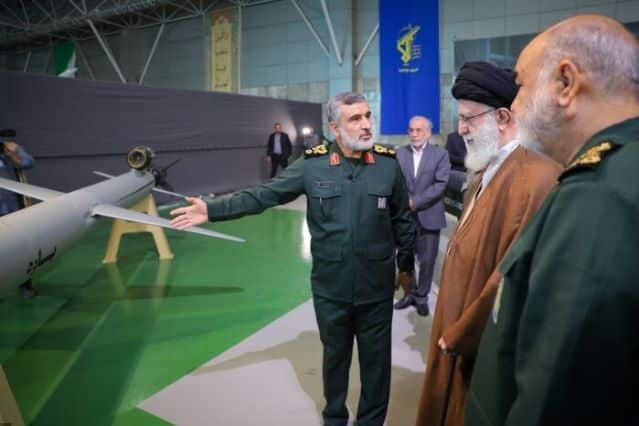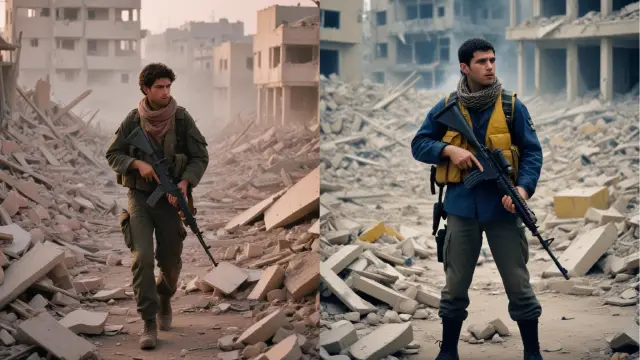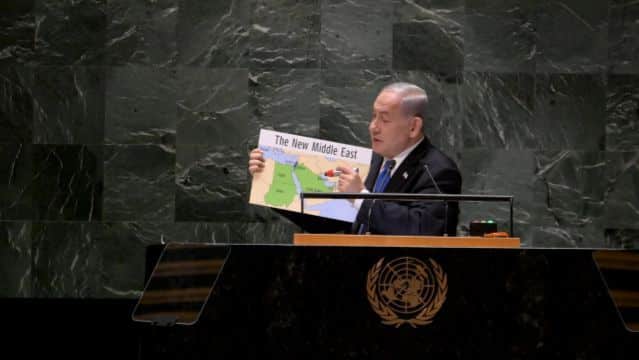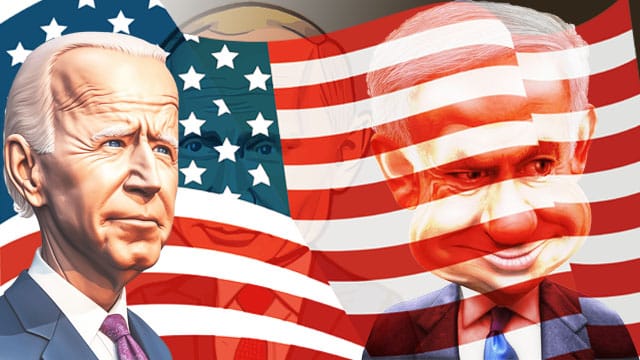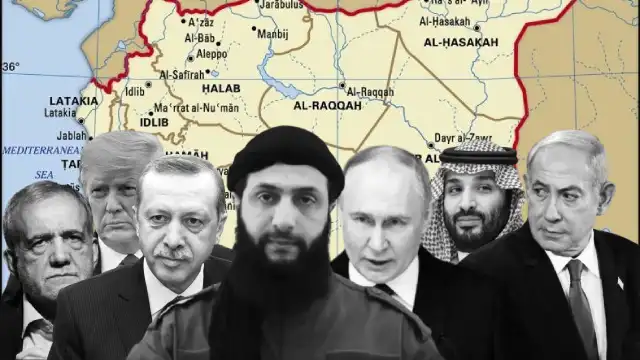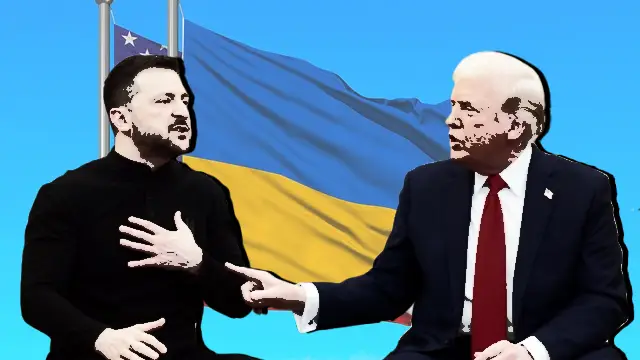Iran started 2025 on a weaker note than 2024. With its hardliner president Ebrahim Raisi dead and replaced with a moderate, Dr Massoud Pezeshkian, who intends to build bridges with the West, Iran appears far weaker than its avatar in early 2024. The decimation of the much-hyped “Axis of Resistance” in the hands of Israel within a span of nearly six months following Mr Raisi’s death has also raised questions over the stability of the Islamic Republic. Can Iran survive the onslaughts of the West? Doubts over Iran’s future have multiplied following the sudden collapse of the Ba’ath Socialist Party’s government in Syria.
What’s wrong with Iran’s future?
Iran’s political class has always been divorced from the common people, especially the working class. With the key to power in its hands, the clergy has always wielded more control over the government of the Islamic Republic than the common people, causing an erosion in public faith in the country’s polity, year after year.
The voter turnout data of the 2024 presidential elections show that only 49% of the total voters participated in the run-up phase, where Dr Pezeshkian faced his competitor Saeed Jalili after neither could garner 50% votes in the first round. The voter turnout in the first phase of the polling was only 39%, the lowest in the history of the Islamic Republic.
On the one hand, the narrative that nothing will change at the grassroots irrespective of whoever is elected played a major role in the public indifference during the crucial elections, on the other, the optics played in the hands of the Iranian opposition—a conglomerate of different right-wing and liberal factions—in exile that portrayed it as a sign of people’s disenchantment with Tehran’s sclerotic theocratic rule.
Insiders say that Iranian people, tired of growing inflation and unemployment, find themselves in a very complex situation. On the one hand, there are fewer opportunities for Iranians to travel to and seek jobs in not only the West but also in other Gulf monarchies, due to the prevalent scepticism regarding Tehran’s role in the region, on the other, they see the government’s weakness in even handling regional challenges, including its inability to protect the sovereignty of the country from Israeli attacks.
The upheaval caused by the hijab row in 2022 has also eroded the regime’s legitimacy before the country’s left-leaning intelligentsia and middle class. Though there was an overwhelming grief over the killing of Mr Raisi, the lower turnout in the elections proved the presence of the disenchantment.
Crisis-ridden economy
According to the US Energy Information Administration’s (USEIA) 2024 data, Iran was the fourth-largest crude oil producer among the Organization of the Petroleum Exporting Countries (OPEC) in 2023. The report says that the Islamic Republic was the “world’s third-largest oil and second-largest natural gas reserve holder in 2023. At the end of 2023, Iran accounted for 24% of oil reserves in the Middle East and 12% in the world”.
Despite this, Iran’s oil sector suffers due to underinvestment and sanctions imposed by the US-led collective West. Unlike other OPEC countries, Iran has been exempted from the oil production cut under the OPEC+ agreement due to the sanctions it faces.
The country managed to increase its oil production as Chinese oil imports increased in 2022 and 2023. The USEIA report states that the Iranians raised their crude oil output by about 1m barrels per day from 2020 to 2023 as its exports to China grew by almost 870m barrels per day during this time.
While it increased its oil exports to China, the US intensified its sanctions on Iran in a bid to cripple its economy. Though Iran’s economy is better diversified than other countries in West Asia, it still suffers a lot of challenges. According to the World Bank’s data, Iran’s economy faced severe challenges despite attaining a GDP growth of 5% year-on-year (YoY) between April and December 2023. The oil sector, which accounts for nearly 8.6% of the economy, grew by over 16% YoY compared to the non-oil sector, which grew by 3.5% YoY. The oil sector’s growth was due to an increase in oil exports to China, still, only 55% of the estimated oil revenue was collected.
Higher imports and the fall in oil prices narrowed the foreign trade surplus for Iran in 2023-24 and despite taking membership in BRICS and Shanghai Cooperation Organization (SCO), sanctions and non-membership in the Financial Action Task Force (FATF) didn’t allow its trade to grow.
Though unemployment fell to the pre-pandemic level of 8.1% in 2023-24, there has been significant unemployment among university graduates with women’s participation in the labour force remaining less than 15%.
Agriculture suffers due to water shortage and there have been major failures in raising revenue to reduce financial deficit through the privatisation of public resources. As a result, Iran has been covering its deficits through bank loans, which exposes the economy to further uncertainties.
While consumer price index (CPI) inflation shot to nearly 55.5% YoY in April 2023, it fell to 31% YoY in May 2024 following the indications that Tehran’s top leaders are ready to negotiate the nuclear deal and other issues with the US-led collective West.
The high unemployment, agrarian crisis, and inflation combine together to throw a big challenge to the clergy, who can’t provide any long-term solution to the issues, provoking dissent within Iranian society.
A desperate bid
President Dr Pezeshkian has gambled a lot on the revival of the Joint Comprehensive Plan of Action (JCPOA), which remained one of the core agendas during his election campaign. Now, Iran knows that the West won’t revive the JCPOA on its conditions after Donald Trump takes over as the president, because his previous administration had discarded the agreement.
Dr Pezeshkian blames the hardliners for losing out to the US in the JCPOA row and claims his government can negotiate a better deal that can also help Iran woo investments from the West to revive its economy. However, it’s quite impossible for Tehran to have its say in the JCPOA negotiations in the present situation when it has suffered major setbacks in its conflicts with Israel and the US.
Moreover, Iran’s close ties with China and Russia also didn’t help it economically to survive the sanctions. Rather, allegations of Tehran supporting Russia with military hardware in the latter’s special military operations in Ukraine have further created roadblocks for Dr Pezeshkian.
Iran’s Foreign Ministry Spokesman Esmaeil Baghaei has recently claimed that Tehran wants to negotiate the JCPOA “based on honour and dignity”, indicating its bid to carry out the negotiations without jeopardising its ties with China and Russia.
Despite occasional hiccups, Iran is also relying on India and other South and South East Asian countries to survive the sanctions. Support from countries like India, which are friends of Iran, Israel, Russia and the US, has become crucial for Tehran during its negotiation.
It’s unlikely that Mr Trump would allow Dr Pezeshkian much room to manoeuvre with the JCPOA negotiations and the West, like always, will impose its conditions on Iran and surrendering its interests can be catastrophic for Tehran.
Moreover, as Iran has now suffered serious setbacks in its conflict with Israel and the Axis of Resistance, its bargaining tool, has significantly depleted, if not totally obliterated, there is less scope for Tehran to have Mr Trump accept its stance.
In this scenario, Dr Pezeshkian’s desperate bid to appease the West may fall on its face and Iran may suffer more embarrassment in the future.
Infiltrated
When Mr Trump’s previous administration killed Qasem Soleimani, the iconic general of Iran’s Islamic Revolutionary Guards Corps (IRGC) and one of the chief architects of the “Axis of Resistance”, in January 2020, it was expected that Iran would retaliate against the US targets in the vicinity to avenge the general. But it remained a mute spectator.
When Mohsen Fakhrizadeh, a top Iranian nuclear scientist, was killed on Iranian soil by a covert Israeli operation conducted by the Mossad remotely in November 2020, Tehran didn’t retaliate either. It cocooned inside its shell.
Israel’s ability to hit deep inside Iran enhanced gradually.
After Israel managed to kill Hamas leader Ismail Haniyeh with a precise strike in Tehran in August 2024, Iran was shocked but couldn’t even respond when Tel Aviv admitted its role a few months later.
The two instances of Iran’s missile strikes against Israel were extremely calculated and reportedly handled by the IRGC, which ensured Israel didn’t suffer casualties to avoid an escalation of tensions. Though the strikes in April and October created optics for Tehran, they inflicted no significant damage to Israel compared to what the latter has done to Gaza and Lebanon.
The helicopter crash that killed Mr Raisi, his foreign minister and top Iranian clergy, remains shrouded in mist even to this day. Iran has refused to acknowledge foul play in the killing of Mr Raisi. However, military and intelligence experts outside Iran have raised doubts over the incident.
In the meantime, Israel claimed it gathered intelligence from Tehran regarding the exact location and itinerary of Hezbollah’s slain secretary-general Hassan Nasrallah, who was killed in an airstrike in September 2024, when Benjamin Netanyahu was addressing the United Nations General Assembly in New York.
The leaking of the information regarding Mr Nasrallah’s whereabouts, Mr Haniyeh’s location and the role of insiders behind Mr Fakhrizadeh’s assassination show that Mossad, the Israeli secret service agency, has deeply infiltrated Iran and has access to the top level, which Iranian leaders deny.
In 2024, former Iranian president Mahmoud Ahmadinejad claimed that the former head of an Iranian counter-intelligence setup entrusted with the task of combatting Mossad ended up being a Mossad agent and fled Iran with 20 of his accomplices in 2021.
Mossad agents executed a heist inside Iran that helped them smuggle crucial papers linked to Iran’s nuclear programme and later altered them to create a narrative around Iran’s nuclear bomb plan. Iran has categorically denied involvement in developing nuclear weapons but the release of its so-called secret documents in 2018 by Mossad helped Israel cajol Mr Trump out of the JCPOA.
Iran will increasingly face difficulties in combatting the Zionist espionage not just due to high-level penetration by Mossad but also because of the upheaval the country will be going through over a top-level succession battle and the resurgence of the opposition.
The succession battle
Iran’s octagenarian supreme leader Ayatollah Sayyed Ali Hosseini Khamenei is ailing and has to pass the baton to a successor. While the candidate for the position of “Supreme Guide” (called Rahbar in Persian) of the Islamic Republic is chosen by a council of Islamic jurists, who are orthodox Shiite clerics, the president’s choice also carries weight during the selection process.
Earlier, the contest was between Mr Khamenei’s son Mojtaba Khamenei and Mr Raisi. According to Iranian sources, the incumbent supreme leader doesn’t approve of passing the baton to his heir as it runs contrary to the Shiite tradition and theology. He reportedly preferred Mr Raisi over Mojtaba, who teaches in a reputed Shiite seminary in Qom. However, Raisi’s killing disrupted the equation, benefitting Mojtaba’s case.
To avoid passing the baton to his son, Mr Khamenei Sr may have to opt for a cleric who is from the common (Arabic Aam) folk, identified by a white turban. Traditionally the elite clerics, with the title “Sayyed”, claiming direct descendancy to Prophet Mohammad through his daughter Fatimah az-Zahra, wear the black turban. Mr Raisi wore the black turban like Mr Khamenei Sr.
Now, Mr Khamenei Sr has to opt for Alireza Arafi, a cleric with a white turban, for the position of supreme leader, if he wants to avoid choosing his son. In that case, the elevation of a commoner to the top post may not go well with the elite “Sayyed” camp and the discontent can seriously impact the functioning of the Islamic Republic where the “Supreme Guide” yields a lot of influence and can even veto the president, who heads the executive.
If the succession battle turns ugly, especially with Dr Pezeshkian having the opportunity to influence the council of jurists to push for such a candidate who would shift focus from security to liberalisation of the economy and foreign policy, then the country will face severe instability.
With uncertainty over the choice of an heir, there is certainty of unrest in the days to come and if the Islamic Republic’s ruling elites can’t control the situation properly, it may provide an opportunity for the US and Israel to destabilise the country.
Opposition’s rise
As legislative politics in Iran is strictly controlled by Islamic jurists, leaving little room for manoeuvre, the lack of space for opposition has allowed the underground opposition to swell within the Islamic Republic. The underground in Iran gets support from the exiled, US-backed opponents of Tehran’s ruling clergy. While Iran ignored these forces hitherto due to their disarrayed condition and overall lack of strength to pose a challenge to the Islamic regime, the fall of Dr Assad’s government in Syria has now changed the scenario.
In April 2023, six months before the Zionist forces started pounding Gaza with bombs, Reza Pahlavi, the self-proclaimed monarch of Iran, visited Israel and met its top leaders, including Prime Minister Netanyahu. He discussed his plan of returning to power and expressed his support for Zionism.
Mr Pahlavi is the son of Iran’s former monarch whose rule was ousted by the 1979 Islamic Revolution. The deposed “King” wants to return to his kingdom, now with Israeli and US support.
Mr Pahlavi has been reminding Israel, apart from extending unconditional support to it in its Gaza aggression and attacks on Lebanon and the West Bank, that relations between Iran and Israel were friendly during his father’s rule.
However, Iranian dailies have countered the assertions.
Mr Pahlavi, who had a negligible fan following within Iran and relied on exiled Iranian monarchy supporters in the US, has gained traction on social media lately.
While he endorses Israeli attacks on Gaza, he vehemently opposes Iran striking Israel and his social media followers manage campaigns to show support for Tel Aviv.
Hailing the fall of Dr Assad’s government, he started asserting the need to topple the Iranian government.
While the CIA’s earlier attempts to unite a plethora of Iran’s opposition organisations with diverse political views and agendas have failed repeatedly, there has been a new ray of hope for it and Mossad as Iran’s establishment enters a phase of turbulence due to internal and external issues.
While Tehran garners strength to survive the turbulence within and the onslaughts by Israel, the events in 2024 have exposed that the regime lacks the prowess to deal with the challenges posed by Israel and the US. Moreover, with just the Houthis in Yemen and a few militias in Iraq now remaining active in the “Axis of Resistance”, Iran can’t exert influence in the region anymore. The engagement of Russia in Ukraine’s frontier prevents Moscow from providing Tehran with any strong support, which was visible during its retreat from Syria. In this scenario, it’s extremely likely that the US-backed Israel will continue its expansion spree and Washington DC under Mr Trump can isolate Iran further, causing more financial troubles for the country, and fuelling discontent that can help in the regime-change operation.
Tanmoy Ibrahim is a journalist who writes extensively on geopolitics and political economy. During his two-decade-long career, he has written extensively on the economic aspects behind the rise of the ultra-right forces and communalism in India. A life-long student of the dynamic praxis of geopolitics, he emphasises the need for a multipolar world with multilateral ties for a peaceful future for all.

